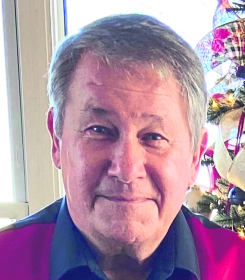
Researchers at the Sylvester Comprehensive Cancer Center, part of the University of Miami Miller School of Medicine, have developed a promising new combination therapy aimed at treating hormone-resistant, estrogen receptor-positive (ER+) breast cancer. In preclinical studies, this innovative approach successfully shrank tumors, reduced the presence of cancer stem cells, and altered the tumor’s immune environment, making it less conducive to cancer growth.
The findings, published in Science Translational Medicine, reveal critical insights into the mechanisms behind resistance to traditional endocrine therapies such as tamoxifen and fulvestrant. Many patients experience diminished effectiveness from these treatments over time, leading to poorer outcomes and limited options. This new research highlights how targeting specific immune cells, referred to as “bodyguards” for cancer cells, may provide a pathway to overcoming this resistance.
To investigate the underlying resistance mechanisms, the research team created two preclinical tumor models resistant to endocrine therapy. They focused on the tumor microenvironment, which acts as a surrounding “neighborhood” that can influence cancer growth. Within this environment, a particular subtype of tumor-associated macrophages (TAMs) emerged as significant players. Researchers identified that a subtype marked by proteins CD163 and PD-L1 was more prevalent in patients with tumors resistant to tamoxifen therapy. The PD-L1 protein is known for helping cancer cells evade the immune system.
Dr. Rumela Chakrabarti, the study’s senior author and co-director of Sylvester’s Surgical Breast Cancer Research Group, explained, “These macrophages act like bodyguards for the cancer cells, helping them survive treatment.” By understanding how these TAMs are recruited and how they function, the research team aims to find new strategies to disrupt their supportive roles.
The study revealed that these PD-L1+ TAMs are attracted to tumors by a signaling molecule known as DLL1, which cancer cells produce. DLL1 serves as a beacon, guiding macrophages to the tumor through a pathway involving CCR3 and CCL7. Once situated within the tumor, these macrophages contribute to the maintenance of cancer stem cells, which are notoriously resilient against standard therapies. They also exhaust CD8-T cells, which are crucial for destroying tumor cells.
Both preclinical studies and analyses of patient-derived tumor samples indicated a strong correlation between elevated levels of DLL1 and PD-L1+ TAMs and resistance to tamoxifen and fulvestrant. Notably, patients with a higher concentration of these immune cells experienced worse survival rates.
In response to this challenge, the research team conducted preclinical studies testing a new combination therapy. By administering antibodies that block both DLL1 and PD-L1, in conjunction with low-dose tamoxifen, they achieved significant tumor shrinkage, reduced cancer stem cell populations, and reprogrammed the immune environment to inhibit cancer growth. “This triple therapy approach could be a turning point for patients whose cancers no longer respond to standard hormone treatments,” Dr. Chakrabarti remarked. “It’s about hitting the cancer from multiple angles at once.”
While the researchers are optimistic about their findings, they acknowledge that further work is necessary before this approach can transition to clinical application. Extended in vivo modeling and pilot clinical trials will be essential to address the complexity of human tumors. Dr. Chakrabarti noted, “Our models are robust, but human tumors are even more complex. We’re optimistic, but careful.”
Understanding the intricate relationship between cancer cells and their surrounding environment is vital for developing next-generation therapies. This research underscores the importance of examining not just the tumor itself but also the extensive “ecosystem” that sustains it. Dr. Chakrabarti emphasized, “Every breakthrough brings us closer to a future where breast cancer is not just treatable, but truly manageable for every patient. We’re committed to making that future a reality in the coming years.”
For further details, refer to the research by Shailesh Singh et al., titled “DLL1-responsive PD-L1+ tumor-associated macrophages promote endocrine resistance in breast cancer,” published in Science Translational Medicine on March 15, 2025.






